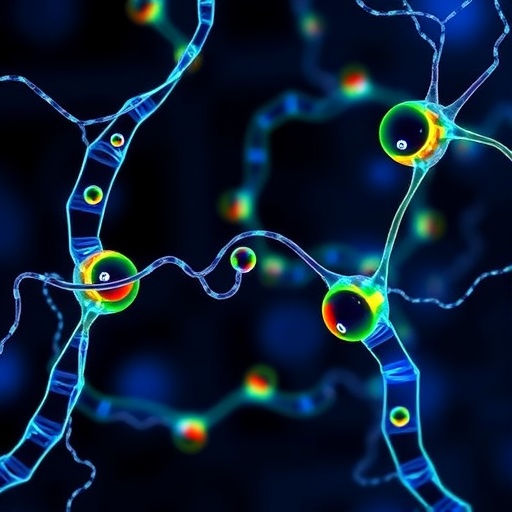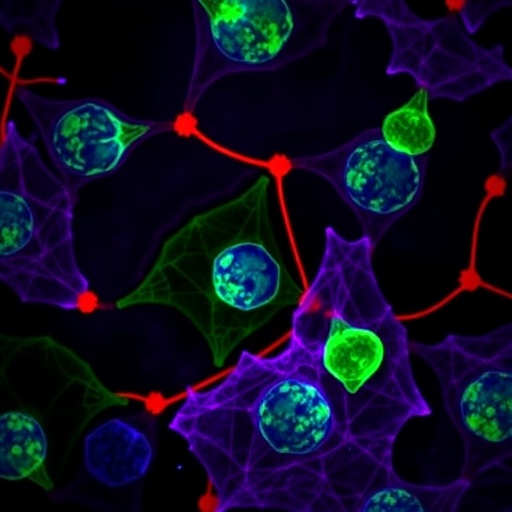In the ever-evolving battlefield against cancer, researchers have identified a new genetic player that could redefine therapeutic strategies. Syntaxin-7 (STX7), a gene fundamentally involved in membrane trafficking, has now emerged as a critical factor driving cancer progression through its influence on cellular signaling and immune cell dynamics. This revelation stems from a comprehensive pan-cancer analysis augmented by rigorous experimental validation in hepatocellular carcinoma (HCC), one of the deadliest forms of liver cancer.
Over the past decade, the intricate relationship between cancer progression and the tumor microenvironment, particularly immune cell infiltration, has underscored the complexity of tumor biology. STX7’s role, until recently, had been linked to various cancers in a vague sense, with little clarity about its specific mechanisms or impact on prognosis. This new research dissects STX7’s expression patterns across a broad spectrum of cancers, uncovering its multifaceted involvement in tumor dynamics and immune regulation.
By harnessing advanced bioinformatics tools and extensive databases, scientists mapped the transcriptional landscape of STX7, observing its marked upregulation in numerous cancer types compared to healthy tissues. These heightened expression levels consistently correlated with poorer patient outcomes, hinting at STX7’s potential as an ominous prognostic marker. The sheer extent of this expression across different malignancies emphasizes the gene’s role beyond any single cancer type, flagging it as a pan-cancer oncogenic contributor.
Diving deeper into cellular heterogeneity, the researchers applied cutting-edge single-cell RNA sequencing and spatial transcriptomics to tease apart STX7’s expression at unprecedented resolution. Such analyses pinpointed macrophages within tumor microenvironments as primary repositories of STX7 expression. Macrophages, known for their dualistic roles in either tumor suppression or promotion, could be influenced by STX7 in ways that potentiate cancerous growth and immune evasion.
The intersection between STX7 and immune dynamics does not end with its presence in macrophages. Functional investigations revealed a compelling association with immune cell infiltration and the activity of key immune regulators. This interaction suggests that STX7 orchestrates a microenvironment conducive to tumor survival by modulating immune responses, essentially tipping the balance away from tumor destruction toward immune tolerance and evasion.
Experimental models, especially those mimicking the clinical complexity of hepatocellular carcinoma, provided concrete evidence of STX7’s functional impact. Knocking out STX7 in tumor cells curtailed their proliferative capabilities and hindered migratory behaviors essential for metastasis. This intervention also disrupted the epithelial-mesenchymal transition (EMT), a phenotypic shift cancer cells exploit to gain mobility and invasiveness.
Strikingly, the mechanistic pathway mediating STX7’s influence appears to be the nuclear factor-kappa B (NF-κB) signaling axis. NF-κB, a well-known regulator of inflammation and cell survival, is frequently co-opted by cancer cells to foster progression and resist therapy. STX7’s activation of NF-κB underscores a pivotal molecular link integrating intracellular trafficking, immune modulation, and tumorigenesis.
The implications of this discovery are profound: targeting STX7 could simultaneously impede EMT, diminish macrophage-driven tumor support, and suppress NF-κB-mediated oncogenic signaling. Such a multi-pronged disruption offers a promising therapeutic avenue, potentially enhancing the efficacy of existing immunotherapies and chemotherapeutic regimes.
Moreover, the pan-cancer scope of STX7’s pathological role elevates the gene from a mere molecular curiosity to a universal biomarker candidate. Its utility in prognostication and as a therapeutic target spans a wide array of malignancies, broadening the horizon for clinical research and drug development.
This study exemplifies the power of integrating computational pan-cancer analyses with robust laboratory experiments to unravel complex oncogenic networks. It not only enriches our understanding of tumor-immune crosstalk but also charts a novel path toward precision medicine tailored to disrupt critical molecular nodes like STX7.
As the global cancer burden intensifies, innovations like the identification of STX7’s oncogenic functions offer hope for more effective and nuanced treatment paradigms. Future investigations are poised to explore STX7 inhibitors and their synergy with immune checkpoint blockade, potentially revolutionizing therapy for hepatocellular carcinoma and beyond.
In summary, the emerging portrait of Syntaxin-7 illuminates a sophisticated cancer facilitator: a molecular switch that shapes tumor aggressiveness through EMT facilitation, immune modulation, and activation of survival signaling pathways. Its discovery heralds a new frontier in understanding and combating cancers marked by poor prognosis and immune evasion.
The research community eagerly awaits the translation of these findings into clinical trials, where the true therapeutic potential of targeting STX7 will be tested. Meanwhile, this breakthrough enriches the growing narrative of how intracellular trafficking genes contribute far beyond housekeeping duties to the orchestration of malignancy.
Ultimately, STX7 stands as a beacon of hope in oncology, symbolizing the intricate dance between cancer cells and their microenvironment—a dance now better understood and possibly disruptable through innovative science.
Subject of Research:
The role of Syntaxin-7 (STX7) in promoting epithelial-mesenchymal transition (EMT), tumor progression, and immune modulation via NF-κB signaling, with a focus on its expression patterns and functional validation in hepatocellular carcinoma and across multiple cancer types.
Article Title:
Syntaxin-7 promotes EMT and tumor progression via NF-κB signaling and is associated with macrophage infiltration: pan-cancer analysis and experimental validation in hepatocellular carcinoma
Article References:
Lei, L., Shi, W., Yang, X. et al. Syntaxin-7 promotes EMT and tumor progression via NF-κB signaling and is associated with macrophage infiltration: pan-cancer analysis and experimental validation in hepatocellular carcinoma. BMC Cancer 25, 1430 (2025). https://doi.org/10.1186/s12885-025-14819-0
Image Credits:
Scienmag.com
DOI:
https://doi.org/10.1186/s12885-025-14819-0
Tags: advanced bioinformatics in cancer researchcorrelation of gene expression and patient outcomesepithelial-mesenchymal transition in tumorshepatocellular carcinoma research findingsimmune cell dynamics in tumor microenvironmentmembrane trafficking genes in cancerNF-κB signaling pathway in cancerpan-cancer analysis of gene expressionprognostic markers in oncologySyntaxin-7 role in cancer progressiontherapeutic strategies targeting Syntaxin-7.tumor biology and immune regulation





